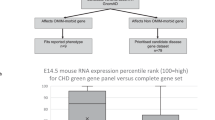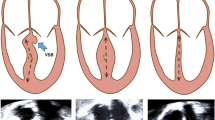Abstract
Background:
Noonan syndrome (NS) is a clinically and genetically heterogeneous syndrome characterized by distinctive facial features, short stature, congenital heart diseases, and other comorbidities. NS-specific growth charts are essential for NS care, but currently no such charts are available for Asian populations.
Methods:
We conducted a nationwide survey by collaborating with three academic societies in Japan. We obtained the data of 356 clinically diagnosed NS subjects from 20 hospitals. The Lambda-Mu-Sigma method was used for establishing growth charts.
Results:
A total of 308 subjects (males: 159 and females: 149) were analyzed after excluding 48 subjects because of missing auxological data (26 subjects), presence of complications affecting growth (5 subjects), and extreme longitudinal growth aberrations which lay more than three standard deviation scores from the mean in this population (17 subjects). Genetic analyses were performed in 150 patients (48.7%); 103 (68.7%) were reported to have some abnormalities in the known causative genes. Cardiovascular diseases were found in 256 patients (83.1%). The NS-specific height, weight, and BMI charts were constructed with 3,249 mixed longitudinal and cross-sectional measurements.
Conclusion:
Growth standards for Japanese individuals with NS were established. These charts are expected to be used in various clinical settings.
Similar content being viewed by others

Log in or create a free account to read this content
Gain free access to this article, as well as selected content from this journal and more on nature.com
or
Change history
22 July 2022
A Correction to this paper has been published: https://doi.org/10.1038/s41390-022-02123-7
References
Noonan JA. Hypertelorism with Turner phenotype. A new syndrome with associated congenital heart disease. Am J Dis Child 1968;116:373–80.
Romano AA, Allanson JE, Dahlgren J, et al. Noonan syndrome: clinical features, diagnosis, and management guidelines. Pediatrics 2010;126:746–59.
Allanson JE, Hall JG, Hughes HE, Preus M, Witt RD. Noonan syndrome: the changing phenotype. Am J Med Genet 1985;21:507–14.
Nora JJ, Nora AH, Sinha AK, Spangler RD, Lubs HA. The Ullrich-Noonan syndrome (Turner phenotype). Am J Dis Child 1974;127:48–55.
Mendez HM, Opitz JM. Noonan syndrome: a review. Am J Med Genet 1985;21:493–506.
Noonan JA. Noonan syndrome and related disorders: alterations in growth and puberty. Rev Endocr Metab Disord 2006;7:251–5.
Roberts AE, Allanson JE, Tartaglia M, Gelb BD. Noonan syndrome. Lancet 2013;381:333–42.
Tartaglia M, Mehler EL, Goldberg R, et al. Mutations in PTPN11, encoding the protein tyrosine phosphatase SHP-2, cause Noonan syndrome. Nat Genet 2001;29:465–8.
Aoki Y, Niihori T, Banjo T, et al. Gain-of-function mutations in RIT1 cause Noonan syndrome, a RAS/MAPK pathway syndrome. Am J Hum Genet 2013;93:173–80.
Tartaglia M, Gelb BD. Disorders of dysregulated signal traffic through the RAS-MAPK pathway: phenotypic spectrum and molecular mechanisms. Ann NY Acad Sci 2010;1214:99–121.
Tartaglia M, Zampino G, Gelb BD. Noonan syndrome: clinical aspects and molecular pathogenesis. Mol Syndromol 2010;1:2–26.
van der Burgt I. Noonan syndrome. Orphanet J Rare Dis 2007;2:4.
van der Burgt I, Berends E, Lommen E, van Beersum S, Hamel B, Mariman E. Clinical and molecular studies in a large Dutch family with Noonan syndrome. Am J Med Genet 1994;53:187–91.
Nagai T, Matsuo N, Kayanuma Y, et al. Standard growth curves for Japanese patients with Prader-Willi syndrome. Am J Med Genet 2000;95:130–4.
Styles ME, Cole TJ, Dennis J, Preece MA. New cross sectional stature, weight, and head circumference references for Down’s syndrome in the UK and Republic of Ireland. Arch Dis Child 2002;87:104–8.
Martin ND, Smith WR, Cole TJ, Preece MA. New height, weight and head circumference charts for British children with Williams syndrome. Arch Dis Child 2007;92:598–601.
Isojima T, Yokoya S, Ito J, Horikawa R, Tanaka T. New reference growth charts for Japanese girls with Turner syndrome. Pediatr Int 2009;51:709–14.
Isojima T, Yokoya S, Ito J, Naiki Y, Horikawa R, Tanaka T. Proposal of new auxological standards for Japanese girls with turner syndrome. Clin Pediatr Endocrinol 2010;19:69–82.
Witt DR, Keena BA, Hall JG, Allanson JE. Growth curves for height in Noonan syndrome. Clin Genet 1986;30:150–3.
Malaquias AC, Brasil AS, Pereira AC, et al. Growth standards of patients with Noonan and Noonan-like syndromes with mutations in the RAS/MAPK pathway. Am J Med Genet A 2012;158A:2700–6.
Ranke MB, Heidemann P, Knupfer C, Enders H, Schmaltz AA, Bierich JR. Noonan syndrome: growth and clinical manifestations in 144 cases. Eur J Pediatr 1988;148:220–7.
Ogata T, Matsuo N, Tamai S, Osano M, Tango T. Target height and target range for the Japanese (in Japanese). Jpn J Pediatr 1990;94:1535–40.
Wright EM, Royston P. A comparison of statistical methods for age-related reference intervals. J R Statist Soc A 1997;160:47–69.
Cole TJ. Fitting smoothed centile curves to reference data. J R Statist Soc A 1988;151:385–418.
Prendiville TW, Gauvreau K, Tworog-Dube E, et al. Cardiovascular disease in Noonan syndrome. Arch Dis Child 2014;99:629–34.
Otten BJ, Noordam C. Growth in Noonan syndrome. Horm Res 2009;72:Suppl 2:31–5.
Noonan JA, Raaijmakers R, Hall BD. Adult height in Noonan syndrome. Am J Med Genet A 2003;123A:68–71.
Binder G, Grathwol S, von Loeper K, et al. Health and quality of life in adults with Noonan syndrome. J Pediatr 2012;161:501–505.e1.
Tartaglia M, Kalidas K, Shaw A, et al. PTPN11 mutations in Noonan syndrome: molecular spectrum, genotype-phenotype correlation, and phenotypic heterogeneity. Am J Hum Genet 2002;70:1555–63.
Shaw AC, Kalidas K, Crosby AH, Jeffery S, Patton MA. The natural history of Noonan syndrome: a long-term follow-up study. Arch Dis Child 2007;92:128–32.
Zenker M, Buheitel G, Rauch R, et al. Genotype-phenotype correlations in Noonan syndrome. J Pediatr 2004;144:368–74.
Limal JM, Parfait B, Cabrol S, et al. Noonan syndrome: relationships between genotype, growth, and growth factors. J Clin Endocrinol Metab 2006;91:300–6.
Sarkozy A, Conti E, Seripa D, et al. Correlation between PTPN11 gene mutations and congenital heart defects in Noonan and LEOPARD syndromes. J Med Genet 2003;40:704–8.
Cole TJ, Green PJ. Smoothing reference centile curves: the LMS method and penalized likelihood. Stat Med 1992;11:1305–19.
Tanaka T, Yokoya S, Kato N, et al. Fundamental policies on evaluating auxological data for Japanese children (in Japanese). J Jpn Ass Hum Auxo 2011;17:84–99.
Acknowledgements
We thank the following members of this nationwide survey study: Hironori Tanahashi, Department of Pediatrics, Asahikawa Medical College School of Medicine; Masato Yokozawa, Department of Pediatrics, Hokkaido Medical Center for Child Health and Rehabilitation; Yoko Aoki, Department of Medical Genetics, Tohoku University School of Medicine; Ikuma Fujiwara, Department of Pediatrics, Tohoku University School of Medicine; Hitoshi Horigome, Department of Child Health, Graduate School of Comprehensive Human Science, University of Tsukuba; Hirofumi Ohashi, Division of Medical Genetics, Saitama Children’s Medical Center; Hiroshi Mochizuki, Division of Endocrinology and Metabolism, Saitama Children’s Medical Center; Chie Takahashi, Yasuhiro Naiki, Reiko Horikawa, Division of Endocrinology and Metabolism, National Center for Child Health and Development; Reina Ishizaki, Hiroyuki Yamagishi, Department of Pediatrics, Keio University School of Medicine; Kenjiro Kosaki, Center for Medical Genetics, Keio University School of Medicine; Hiroshi Yoshihashi, Division of Medical Genetics, Tokyo Metropolitan Children’s Medical Center; Yukihiro Hasegawa, Division of Endocrinology and Metabolism, Tokyo Metropolitan Children’s Medical Center; In-Sam Park, Department of Pediatrics, Sakakihara Heart Institute; Sachiko Kitanaka, Department of Pediatrics, Graduate School of Medicine, The University of Tokyo; Kenji Kurosawa, Division of Medical Genetics, Kanagawa Children’s Medical Center, Masanori Adachi, Department of Endocrinology and Metabolism, Kanagawa Children’s Medical Center; Ayumi Uematsu, Department of Endocrinology and Metabolism, Shizuoka Children’s Hospital; Yasuo Ono, Department of Cardiology, Shizuoka Children’s Hospital; Haruo Mizuno, Shinji Saito, Department of Pediatrics and Neonatology, Nagoya City University Graduate School of Medical Sciences; Masako Izawa, Takashi Hamajima, Division of Endocrinology and Metabolism, Aichi Children’s Health and Medical Center; Yasuko Shoji, Shinobu Ida, Department of Pediatric Gastroenterology, Nutrition, and Endocrinology, Osaka Medical Center and Research Institute for Maternal and Child Health; Nobuhiko Okamoto, Department of Medical Genetics, Osaka Medical Center and Research Institute for Maternal and Child Health; Yoko Miyoshi, Noriyuki Namba, Keiichi Ozono, Department of Pediatrics, Osaka University Graduate School of Medicine; Yoshikazu Nishi, Department of Pediatrics, Hiroshima Red Cross Hospital. We also thank Julian Tang, Department of Education for Clinical Research, National Center for Child Health and Development, for reviewing and editing this manuscript.
Author information
Authors and Affiliations
Corresponding author
Additional information
The original online version of this article was revised: On page 547, the equation “Z = [(y/M)L−1]/(L × S)” should have been “Z = [(y/M)L − 1]/(L × S)”.
Supplementary information
Supplementary Figures
(ZIP 7905 kb)
Supplementary Tables
(DOC 281 kb)
Rights and permissions
About this article
Cite this article
Isojima, T., Sakazume, S., Hasegawa, T. et al. Growth references for Japanese individuals with Noonan syndrome. Pediatr Res 79, 543–548 (2016). https://doi.org/10.1038/pr.2015.254
Received:
Accepted:
Published:
Issue date:
DOI: https://doi.org/10.1038/pr.2015.254
This article is cited by
-
An anthropometric evidence against the use of age-based estimation of bodyweight in pediatric patients admitted to intensive care units
Scientific Reports (2023)
-
Noonan Syndrome in Thai Children
Indian Pediatrics (2020)


